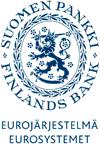 Research Discussion Papers, Bank of Finland
Research Discussion Papers, Bank of Finland
No 2/2005:
Ageing, interest rates, and financial flows
Tuomas Saarenheimo
Abstract: The median age of the global population is presently
increasing by nearly three months every year. Over the next couple of
decades, almost every country in the world is set to experience an
unprecedented increase in the share of elderly population. This development
has the potential to fundamentally affect the functioning of economic and
financial systems globally. This study concentrates on the effects of
ageing on the evolution of global interest rates and financial flows. The
study uses a 73-cohort general equilibrium overlapping generations model of
five major economic areas (USA, EU-15, Japan, China, and India). Utilising
actual population data and UN population projections, the model yields
predictions for major economic and financial variables up to 2050. The
model predicts a decline in global equilibrium real interest rates over the
next two decades, but the size of the decline depends crucially on the
future evolution of public pension benefits. If the present generosity of
pension systems is maintained – leading to a steep increase in the cost of
the pension systems – the maximum decline of interest rates is projected to
be about 70 basis points from present levels. If pension benefits are
reduced to offset the increasing cost pressures, the decline in global
equilibrium interest rates can be much larger, while increases in the
retirement age work in the opposite direction. The results do not
anticipate a ‘financial market meltdown’ – a collapse in asset prices
associated with the retirement of the baby-boomers – predicted by some. On
the contrary, bond prices should fare fairly well over the next three
decades. The main reason for this is that increasing life expectancy at
retirement creates a need for higher retirement saving – in the future,
people will want to retire wealthier than they do today. This trend more
than offsets the negative effect of the retirement of baby-boomers on asset
demand.
Keywords: ageing; real interest rates; financial flows; public pension systems; (follow links to similar papers)
JEL-Codes: E44; J11; (follow links to similar papers)
33 pages, February 13, 2005
Before downloading any of the electronic versions below
you should read our statement on
copyright.
Download GhostScript
for viewing Postscript files and the
Acrobat Reader for viewing and printing pdf files.
Full text versions of the paper:
0502netti.pdf 
Download Statistics
Questions (including download problems) about the papers in this series should be directed to Minna Nyman ()
Report other problems with accessing this service to Sune Karlsson ()
or Helena Lundin ().
Programing by
Design by Joachim Ekebom
 Research Discussion Papers, Bank of Finland
Research Discussion Papers, Bank of Finland
 Research Discussion Papers, Bank of Finland
Research Discussion Papers, Bank of Finland